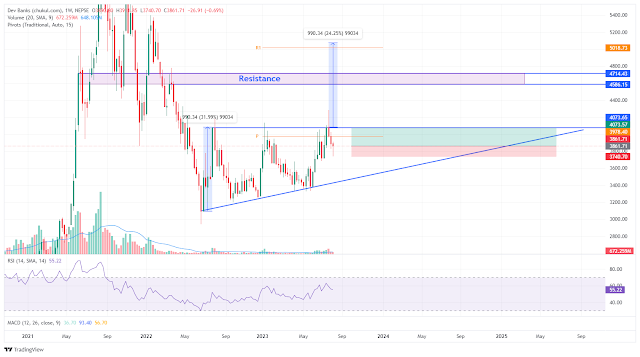What is a Doji Candlestick?
The Doji candlestick is a significant aspect of technical analysis, revealing market indecision and signaling potential trend reversals. It materializes when an asset's opening and closing prices are nearly identical, forming a minimal or non-existent body with extended upper and lower wicks indicating price volatility.
Key Doji types include the classic, dragonfly, gravestone, and long-legged variations. Classic Dojis signify market equilibrium, while dragonfly and gravestone Dojis suggest potential bullish and bearish reversals, respectively. Long-legged Dojis reflect heightened indecision due to extensive price movement.
Interpreting Doji patterns involves recognizing market indecision and potential reversals, but it's essential to confirm signals with additional technical indicators and consider trading volume. Doji patterns alone may produce false signals, emphasizing the need for a comprehensive analysis and awareness of market context.
Despite their usefulness, Doji patterns are not infallible, and traders should exercise caution, understanding their limitations and verifying signals with other tools for more reliable decision-making.
Doji On Nepse
A classic Doji has formed on the Nepse chart, it still holds significant implications, particularly in the context of being within a supply zone or resistance level. Here's an elaboration:
The presence of a classic Doji on the Nepse chart signifies market indecision, where the opening and closing prices are essentially equal, forming a thin horizontal line. This indecision suggests a temporary equilibrium between buyers and sellers. However, when this Doji pattern occurs within a supply zone or resistance level, its significance is heightened.
Classic Doji within a Supply Zone/Resistance:
Market Indecision at Resistance:
The classic Doji within a supply zone indicates that, despite reaching a resistance level, the market is undecided about its next move. This could be a pivotal moment where buyers and sellers are closely balanced.
Potential Trend Reversal or Continuation:
The classic Doji at a resistance level can be interpreted as a potential signal for a trend reversal. If the Doji is followed by a subsequent price decline, it could suggest that the bears are gaining control. On the other hand, if it is followed by a breakout above the resistance, it might signal a continuation of the existing uptrend.
Confirmation and Volume Analysis:
Traders should seek confirmation from other technical indicators or price action signals. Analyzing trading volume during the formation of the Doji can provide insights into the strength of the potential reversal or continuation.
Risk Management:
Given the uncertainty associated with market indecision, traders should implement effective risk management strategies. This includes setting stop-loss orders to limit potential losses and being prepared for different scenarios.
In summary, a classic Doji within a supply zone or resistance level on the Nepse chart suggests a critical juncture in the market. It's a moment where participants are evaluating their positions, and the subsequent price action will likely provide valuable insights into the future trend direction. Careful analysis, confirmation from other indicators, and prudent risk management are essential when considering trading decisions in such scenarios.
Market Indecision at Resistance:
The classic Doji within a supply zone indicates that, despite reaching a resistance level, the market is undecided about its next move. This could be a pivotal moment where buyers and sellers are closely balanced.
Potential Trend Reversal or Continuation:
The classic Doji at a resistance level can be interpreted as a potential signal for a trend reversal. If the Doji is followed by a subsequent price decline, it could suggest that the bears are gaining control. On the other hand, if it is followed by a breakout above the resistance, it might signal a continuation of the existing uptrend.
Confirmation and Volume Analysis:
Traders should seek confirmation from other technical indicators or price action signals. Analyzing trading volume during the formation of the Doji can provide insights into the strength of the potential reversal or continuation.
Risk Management:
Given the uncertainty associated with market indecision, traders should implement effective risk management strategies. This includes setting stop-loss orders to limit potential losses and being prepared for different scenarios.













